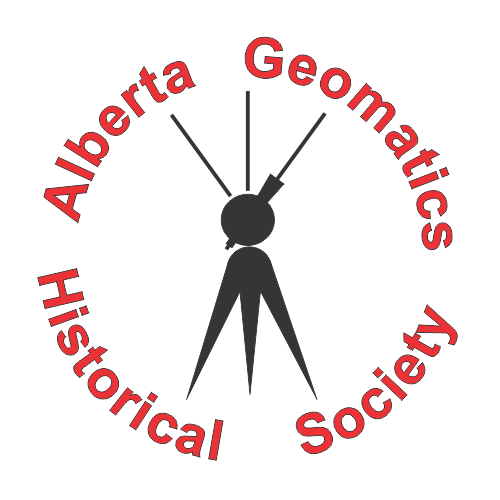
26. It’s a Theodolite – and a Level
By Gordon Olsson
A unique instrument in the collection is one that can either be a theodolite or a level depending on how the components are assembled. The maker of it was Adie, Optician, Mathematical & Philosophical. The Adie name as makers of scientific instruments started in Edinburgh in 1803 when Alexander Adie formed a partnership with John Miller, his uncle. Alexander had been apprenticing under John Miller since 1789. Miller and Adie continued until 1822 when the name Miller was dropped from the name of the firm. Alexander Adie had three sons, John, Richard and Patrick. In 1835, John went into business with his father to form Adie & Son. Richard set up his own firm in Liverpool and Patrick set up his own firm in London.
The only company that continued to flourish was the firm of Patrick Adie in London. His firm was established in 1844. Patrick died in 1886, however the business continued under the name Adie. The firm changed addresses several times, all being in London, England. A label on the inside of the instrument box names the instrument maker as Adie, Optician, Mathematical & Philosophical, Instrument Maker, 15 Pall Mall, London. The firm was located at 15 Pall Mall only from 1869-1885 indicating that the instrument was made during that period.
Adie instruments were used in the great trigonometrical survey of India and in the construction of railways around the world. The business continued until 1942.
This instrument was found in the Alberta Land Surveyors’ Association office, presumably obtained well before the collection was formalized.
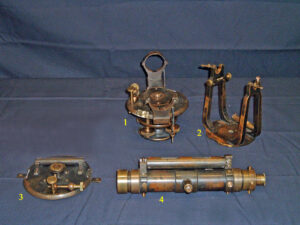
The instrument breaks down into four pieces.
- The base, with leveling screws, horizontal angle scale and two yokes for holding the telescope in place when in the dumpy level mode. The base is inscribed ”Adie London Patent 171.”
- The standard, which when joined with the instrument base will hold the telescope when in the transit mode.
- The vertical angle scale used when in the transit mode.
- The telescope and attached long bubble, used in both the transit and level mode.
Source is unknown
ALSA 2007.23.01
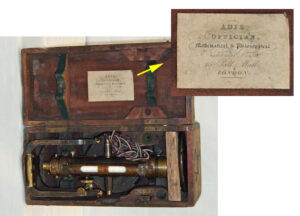
A wooden carrying case makes up the remainder of the object. A label attached to the inside of the instrument box names the instrument maker as Adie, Optician, Mathematical & Philosophical, Instrument Maker, 15 Pall Mall, London.
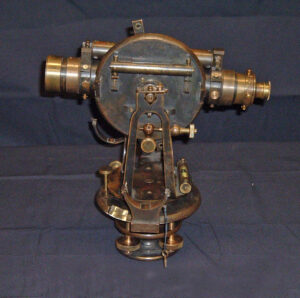
To make the instrument a transit, the telescope with the removable vertical angle scale attached to it, is placed in the two cradles on the top of the standard and then locked into place by two hasps.
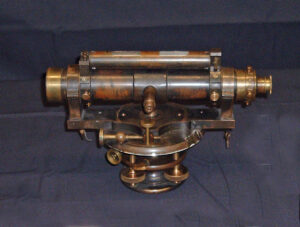
To make the instrument a level, the telescope along with the long bubble is dropped into the two yokes on the instrument base, and then locked into place by two hasps.
Sources of Information:
- Antiques Atlas: https://www.antiques-atlas.com/jasonclarkeantiques/browse.php?code=as542a405
- Science Museum Group: https://collection.sciencemuseumgroup.org.uk/people/cp6628/adie-patrick
- Grace’s Guide to British Industrial History, Patrick Adie (1821-1886): https://www.gracesguide.co.uk/Patrick_Adie_%281821-1886%29
Author: Gordon Olsson, ALS (Hon. Life)
July 7, 2022
Copyright 2024 © Alberta Geomatics Historical Society
